Saturday Jan 17, 2026
Saturday Jan 17, 2026
Friday, 29 January 2021 00:15 - - {{hitsCtrl.values.hits}}

Under the current situation, multiple skills need to be developed to move from one industry to another to be better off with higher labour market outcomes
 In general, the demand for labour is considered as a derivative demand because the demand for labour depends according to the change in the supply of goods and services in a country. It is important to consider the existing and future labour demand in the country or globally as the demand for skilled labour should be well-studied and the supply of skilled labour should be planned in a manner that meets the demand.
In general, the demand for labour is considered as a derivative demand because the demand for labour depends according to the change in the supply of goods and services in a country. It is important to consider the existing and future labour demand in the country or globally as the demand for skilled labour should be well-studied and the supply of skilled labour should be planned in a manner that meets the demand.
It is necessary to identify future labour demand, employers’ attitudes, demand and supply gaps and about the workers who will be supplied to the labour market by current education and training systems. It is important to consider the contribution and responsibilities that employers have to make education and training programs successful.
The prevailing demand for labour and economic growth will largely depend on future economic development policies and plans. The previous Government identified five strategic areas for the future development of the country; namely, Knowledge, Energy, Shipping, Hotels and Tourism, Aviation. These were regarded as the five major areas to be developed. According to a study conducted by the Sri Lanka National Human Resource Development Council of Sri Lanka (2015), the number of direct jobs in the tourism sector is projected to increase to 242855 by 2020. Thus, identifying the demand for jobs in the labour market constantly helps in planning education and training programs.
The current Government’s policy, the Vision of Vistas of Prosperity and Splendour, has signalled the future demand for skilled labour in the areas identified to further develop. It also directly targets the supply of skilled manpower. However, the global situation of COVID-19 pandemic which is spread all over the world, has had a severe adverse effect on the demand and supply of the labour market both domestically and globally.
Methods of predicting labour demand
There are several methods that can be followed to predict labour demand in the labour market.
1. Trend analysis
2. Econometrics model
3. Regression analysis
4. Focused group discussion
5. Managerial judgment
6. Workforce survey
7. Job vacancy analysis
I do not intend to elaborate on these methods as they are beyond the scope of this article. However, there are several factors that determine the size and nature of labour demand to predict the future labour market (Refer Figure 1).
Identifying labour demand in Sri Lanka
By the year 2019, there was a significant increase in the demand for labour in Sri Lanka’s leading development sectors such as construction, manufacturing, tourism and hospitality and technology, and as the supply of skilled manpower was very low it created a large skills gap in the country. But with the current COVID-19 pandemic, about 600,000 direct and indirect jobs have been lost in the tourism and allied sectors.
Several studies have been conducted in different sectors to identify the demand in the Sri Lankan labour market. These studies are being carried out mainly by several government organisations. Among them are the National Human Resource Development Council, the Tertiary and Vocational Education Commission, the Department of Census and Statistics, and the Department of Manpower.
National Human Resource Development Council (NHRDC in 2015) conducted a macro analysis to cover all sectors and forecast the demand for the next five years. The ARIMA model was used for this purpose and could examine the actual data was correct only for certain areas after five years. It is planned to develop and use this analytical method for forecasting in the next five years. Furthermore, NHRDC (2016) conducted study on the labour market related to the hotel and tourism industry and it showcased that the number of direct jobs is projected to increase from 132,000 in 2015 to 242,800 by 2020. The study conducted by the Information and Computer Technology Agency (ICTA) (2010) and the study conducted by Chandrasiri, S. (2016) for the Skill Sector Council, are important in considering the studies conducted in this field. Accordingly, future demand for careers in the field of computer and communication technology has been estimated.
IT-BPM Workforce Survey (2019) conducted by the Institute of Information Technology Agency (ICTA) with the primary objective of achieving the target of 200,000 in the Sri Lankan workforce by the year 2022. The survey shows that there is a rapid growth in the ICT workforce in Sri Lanka as a whole and a significant increase in the representation of women in the ICT sector.
Jobs in high demand in Sri Lanka: Analysis of newspaper advertisements – TVEC
According to the information provided by the Tertiary and Vocational Education Commission (TVEC, 2015-2019), the highest number of job vacancies have been created by the private sector and the number of vacancies is 224,224 in 2017. According to 2018 data, the advertising percentage in the private sector is 99%. Newspaper advertisement information gives an idea of the demand for jobs in the labour market. Accordingly, it is possible to identify which sectors have the highest demand in comparison and Table 1 mentions those high demand jobs.
Jobs in high demand in the international labour market
Considering the labour demand in the international labour market, there has been a significant growth in employment in the health and nursing services, tourism, construction, manufacturing and ICT sectors. But due to the current global COVID-19 pandemic, unemployment is on the rise. Millions have lost their jobs, especially in the tourism sector. However, this situation will change in the near future. Controlling population growth in many developed countries of the world has led to a decline in the working age population, an increase in adulthood and, consequently, an increase in the dependency ratio.
The skills gap has widened due to the shortage of supply of skilled craftsmen and high demand. On the one hand there is a tendency to use advanced technology to fill it. Accordingly, 4IR is causing a revolutionary transformation and industry is moving towards automation with as few labour production processes as possible using robotics. As a result, new jobs are created and other jobs are eliminated from the labour market.
Construction industry
Table 2 shows the most demanded jobs and the average wage level in the construction sector forecast for developed countries, including the United States, which affects labour market demand.
Information and Communication Technology
IDC is the premier global provider of market intelligence was projected ICT global revenue was $ 4.8 trillion for 2020 and $ 5 trillion in the 2021. The United States is the largest tech market in the world, representing 33% of the total, or approximately $ 1.6 trillion for 2021. However, as far as individual countries go, China has clearly established itself as a major player in the global tech market. China has followed a pattern that can also be seen in developing regions, where there is a twofold effect of closing the gap in categories such as IT infrastructure, software and services, along with staking out leadership positions in emerging areas such as 5G and robotics.
The worldwide full-time employment in the ICT sector is projected to reach 55.3 million in 2020 (pre-corona estimation), an increase of 3.9% over 2019. Software developer/engineer, user support specialist and systems analyst are three major job roles in the ICT industry. Top 10 demanded jobs in ICT are mentioned in Table 3.
Health and health service sector
Health services is one of the fundamental sectors of society and the economy. Quality health care has significant positive effects on individual and public health, economic growth and development. This sector is a major employment sector, with important potential in job creation. The global shortages and unequal distribution of qualified health personnel are a major constraint in providing universal access to health care.
Decent work for health workers is essential to provide quality health care. The ILO supports improvement of working conditions and labour relations in the health sector through sectoral labour standards and social dialogue , and collaborates with World Health Organisation (WHO ) to promote supportive, enabling and healthy work environments for the health workforce. In the United States, health care employment as a percentage of the total is 12%. High demand jobs in the healthcare sector are mentioned in Table 4.
Manufacturing industry
For more than two centuries, the manufacturing industry has adopted new technologies and provided new jobs for workers. With the use of technologies such as artificial intelligence (AI), robotics, and the Internet of Things (IoT), the work environment is rapidly changing, making today’s industry more attractive. Although some predict that many jobs will be lost due to the use of this new technology, a new number of jobs are being created in those technologies.
Since mid-2017, job opportunities have been growing at a double-digit rate, and in this dynamically changing manufacturing environment, research institutes such as Deloitte have begun to re-evaluate their pre-projections and study the extent of the skills gap. These studies also reveal that there is a wide gap between the predicted new job opportunities and the pool of talented people who can fill them.
The study found that with an economic impact of $ 2.5 trillion, the skills gap between 2018 and 2028 is unlikely to fill the estimated 2.4 million. Furthermore, the study shows that there may be a three-fold shortage of supplies to fill positions related to digital skills, skilled products and operations managers over the next three years.
How does the manufacturing industry produce workers for future work with robots and advanced technology? What are the skills need to have in the workplace? What are the facilities for training and education for these skills? Filling future employment gaps will require in-depth analysis of the labour market to bridge this skills gap in the manufacturing sector. Accordingly, the details of the high demand jobs currently identified are given in the Table 5.
Financial and business services
The financial and business services industries are essential to almost every global market. As the example, in the United States and the United Kingdom, it accounts for about a third of the national economy. A study by Korn Ferry Company predicts that the skills shortage in the sector will worsen, which will significantly hamper industry growth.
The skills gap is projected to rise to nearly 10.7 million in the near future, with a loss of $ 1.3 trillion in revenue. One of the reasons for this is that the competition for skills is already fierce and with the rapid use of competitive technology leads to a huge shortage of skilled workers.
Hotel and hospitality sector
With the COVID-19 pandemic, job demand in this sector has dropped significantly compared to other sectors. As a result of the COVID-19 pandemic, the global travel and tourism market is predicted to see a loss of 100.8 million jobs worldwide in 2020. The biggest loss from COVID-19 is the Asia Pacific region, losing approximately 63.4 million jobs, while Europe is forecast to be the second hardest hit with a forecasted employment drop of 13 million. But some of the jobs with the highest demand have been identified in terms of the potential demand for jobs in this sector as mentioned in Table 7.
Among the developed countries, high demand employment opportunities have been analysed and identified in several countries, including the United States. However, just as the predicted job opportunities apply to that country, it can be assumed that this demand trend is generally the same in most developed countries. Furthermore, according to the American Bureau of Labour Information, among the 10 fastest-growing job opportunities for the 2016-2026 period the first, second and third fastest growing professions, are solar energy technicians, wind power technicians and home healthcare professionals, respectively. Details are shown in Figure 2 (Graph 1).
Jobs creating with corona (COVID-19) expansion
With the spread of the coronavirus around the world, the effectiveness of international products and businesses was severely hampered by the restrictive policies adopted by countries. It directly affected the job market and thus the unemployment rate grew significantly. Industrial and service sectors in general were adversely affected meanwhile some creating huge job demand is created several sectors in many countries. Below is a brief description of those areas.
Information Technology
No one had heard of Zoom or MS Teams before the plague, but now they have become the stuff of life. Companies are trying to improve their systems to make it easier to work from home, and broadband has become central to people’s home life. Jervin Davis, Senior Labour Market Consultant at CIPD, the professional body for human resources and people’s development, said: “The number of job opportunities in IT is rapidly growing again.”
Health and social care
Demand for this specialty has grown significantly as a result of recent corporate scandals involving foreign healthcare companies and private healthcare providers. With this, the demand for doctors, nurses and paramedics as well as cleaners in this field has increased rapidly.
Distribution and retailing of goods
As the Corona menace spread, new methods were developed to integrate information and communication technology into the marketing of goods and services. As a result, a large number of new jobs have been created. For example, Amazon is hiring 100,000 workers due to high demand.
Physical fitness
With the current health risk situation, many people are tempted to do more about their health. Due to this, the demand for exercise consultants and related jobs has increased significantly. Between March and the end of June, more than 858,000 people in the UK downloaded the NHS-backed Couch to 5K app. That’s a 92% increase over the same period last year.
Cleaning and sanitation
The value of cleaners has increased in the fight against the corona virus and in preventing the second wave of the virus. Many countries around the world have created a large number of full-time and part-time jobs, and the demand for these jobs has increased by 75%. Kailey Hagen (March 19, 2020)
Agriculture
Agriculture has become important as an industry that can sustain itself with the corona wave. In Sri Lanka, it can be seen that those who are employed in some other sectors are increasingly turning to agriculture. Demand for agricultural labour has further increased in developed countries, including Britain.
Way forward
The current and future labour market demand is continually analysed locally and internationally. There is a limit of the adequate and accurate data needed to predict labour demand locally. But developed countries like the United States have a very good database so they can make more accurate predictions about every field. However, the current global COVID-19 pandemic has adversely affected the both supply and demand of the entire labour market.
Even though millions are unemployed due to prevailing pandemic, the use of technology and the creation of new jobs has become a special feature and has to be adapted to face future challenges. Significant changes in job demand are taking place in the global economy with technological advances, advances in production and distribution processes, changes in population composition of increasing aging population in many countries and uncertainties.
Under the current situation, multiple skills need to be developed to move from one industry to another to be better off with higher labour market outcomes. All those higher education, education, professional training and TVET sector organisations need to have more attention on this to address these dynamic labour market changes.
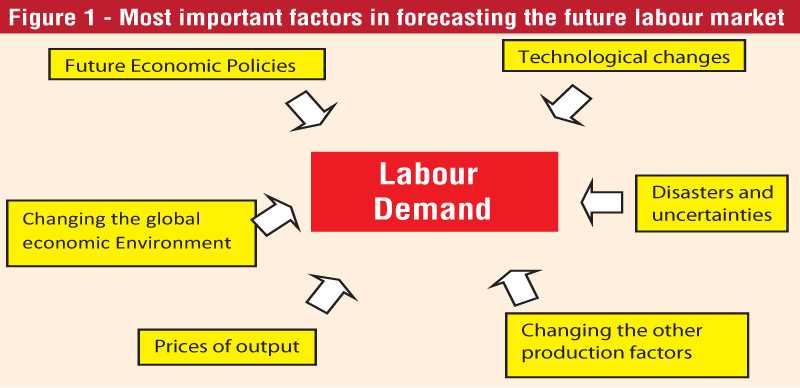
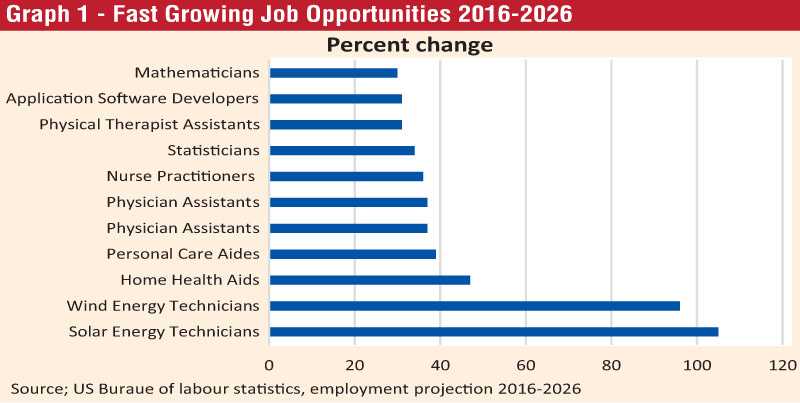
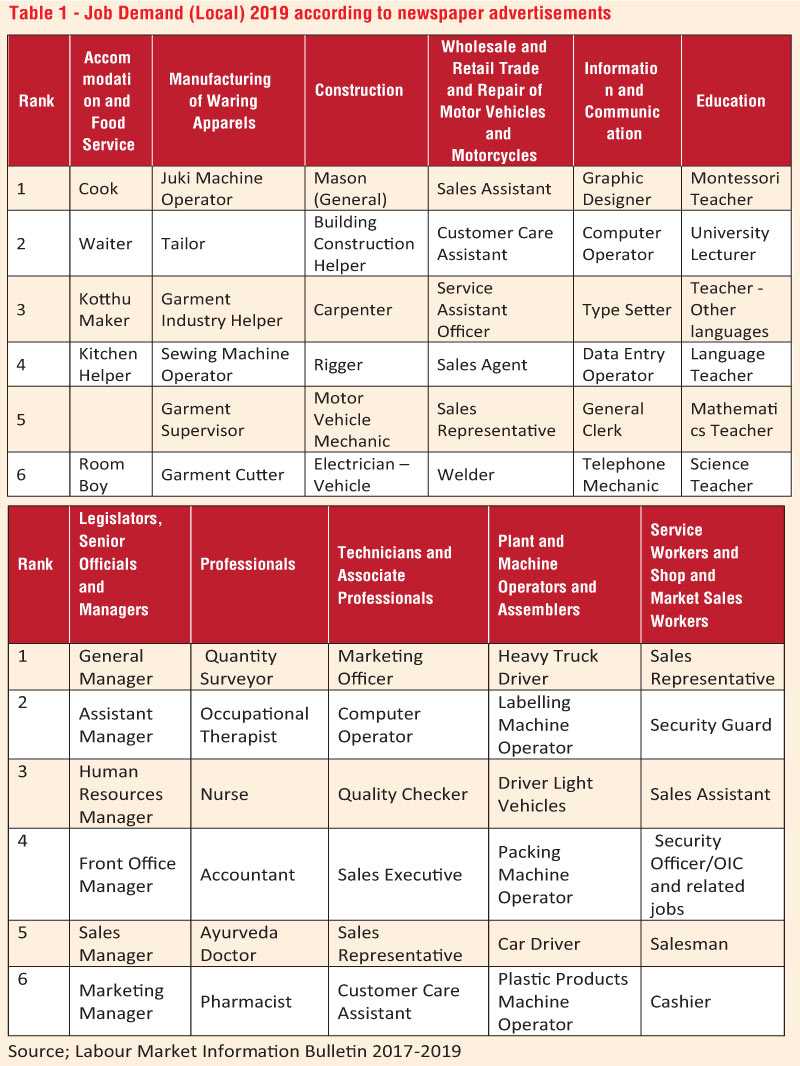
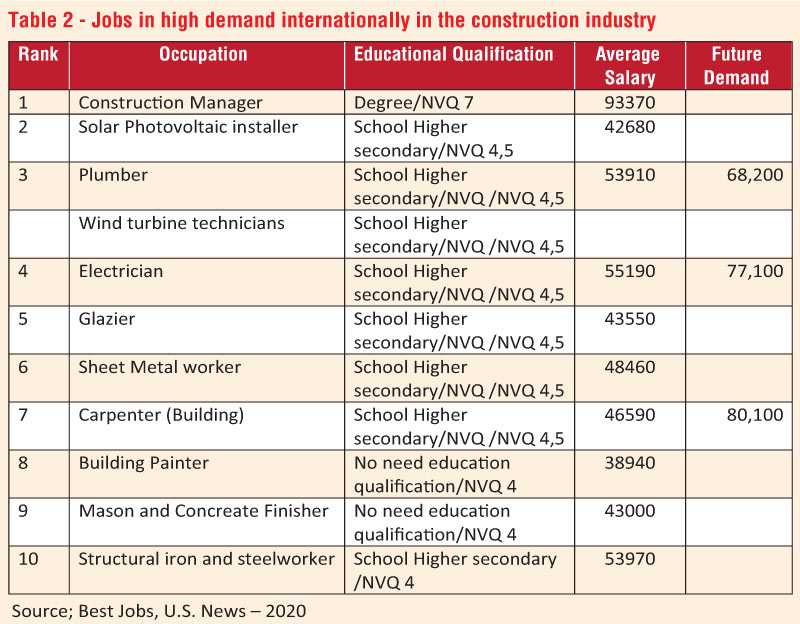



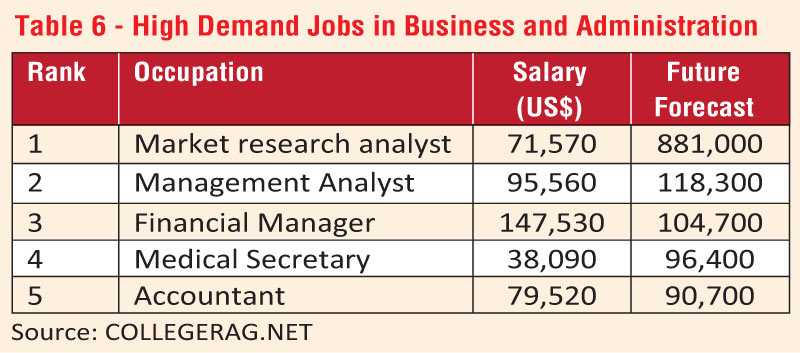
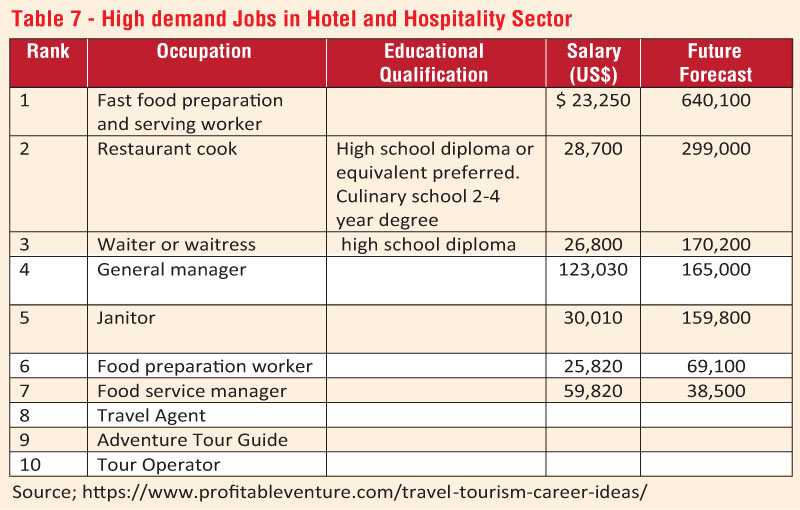
(I would like to thank Upali Ratnayake, Navoda Edirisinghe and Uda Weerasena for their support in preparing this article.)
(The writer is the Director, National Human Resources Development Council of Sri Lanka.)